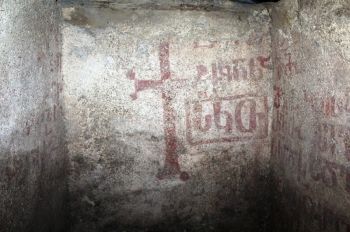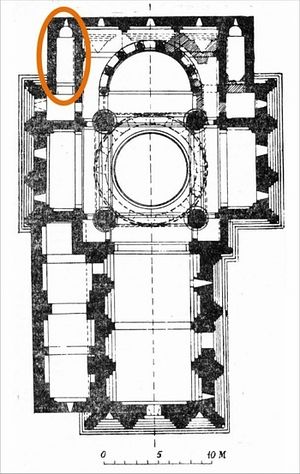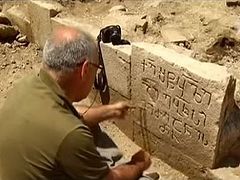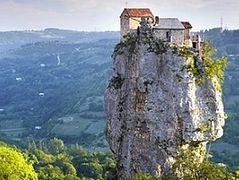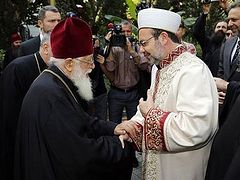Source: blagovest-info.ru
Tbilisi, July 5, 2016
In the north-eastern part of the main church of the Georgian Ishkhani monastery complex, ceded to Turkey, specialists of the Tbilisi “Research Center” discovered a unique entombment, reports ambebi.ge. According to member of the “Research Center” Levan Tsikarishvili, there is no doubt that a high-ranking representative of the nobility is buried in the grave. Paleographer Temo Jojua is currently leading the work on the inscriptions cleared away inside the crypt.
“It is difficult to convey the emotions that overcame me when, having crept into the narrow, extremely dark head of the crypt, I lit my lantern and became the first witness of this unique opening. The extensive inscriptions bear witness that this crypt belongs to some high-ranking representative of secular nobility or clergy, possibly even an emperor or bishop. The date of construction of the tomb is indicated as 1009. Such crypts with such rich paleographic material are a rarity of rarities, representing great historical and cultural value,” Levan Tsikarishvili said.
Scientists have suggested that the crypt perhaps belongs to King Gurgen, the father of Bagrat III, the founder of the famous Kutaisi church, a symbol of the unity and power of Georgia, where St. David the Builder was crowned as king.
Proponents of this position, particularly historian Buba Kudava, consider the date of the discovered tomb to be conclusive evidence. King Gurgen reposed in 1008, with the tomb dated to 1009, when its construction could have been completed.
However, the Ishkhani church, which, as historians have proven, King Gurgen built, stands at some distance, and it would be logical to assume that his remains were buried in the church he built.
Either way, the discovered entombment offers rich food for thought and research by scientists of various profiles.
In 2013 the Turkish authorities began the process of restoring Ishkhani, continuing until today with the partial participation of Georgian specialists.
Several interesting archaeological finds have been made during this time. In particular, literally a few days ago fragments of a hitherto small, unknown church and other structures were discovered: pottery fragments (jugs buried in the ground for storing wine and oil), and so on.
Based on research materials, a catalog is planned for 2017 including around 1,000 monuments of Tao-Klarjeti culture—the historical region ceded to Turkey.
The Ishkhani church is one of the remarkable monuments of Georgian church architecture, formerly an episcopal cathedral. The beginning of its construction is dated to the seventh century, and in the eleventh century the church was thoroughly rebuilt.
The Ishkhani church is repeatedly mentioned in Georgian and foreign written sources, studied by scientists for many centuries.

